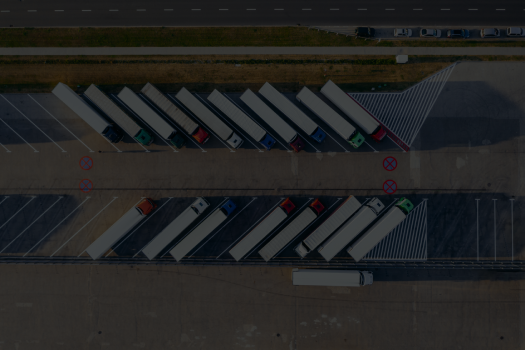
Why shipzzy
Quote, book, track, and manage all your shipments without picking up the phone or sending an email.
Read moreFreight Class is an important part of the LTL shipping industry, but one that most new shippers are confused by. What is freight class? How do I find mine? How does the class affect my shipping price? Read on, my friend! You’re in the right place.
Let’s begin with the definition. The National Motor Freight Traffic Association (NMFTA) defines a class as a way “to establish a commodity’s transportability.” The National Motor Freight Classification (NMFC) is the standard which enforces this system, grouping commodities into one of 18 classes – ranging from 50 to 500. The NMFC determines this class using four characteristics: Density, Stowability, Handling and Liability.
This part is simple — the lower your class, the lower the price. An item that is a class 50 will be cheaper to ship than an item that is class 500.
Different commodities have a different combination of these four factors and this NMFC codes list divides them into 18 classes numbered from 50 to 500.
| Class Name | Samples | Weight Range Per Cubic Foot | Cost |
| Class 50 – Clean Freight | Fits on standard shrink-wrapped 4X4 pallet, strapping material, flour | Over 50 lbs. | Lowest |
| Class 55 | Bricks, cement, mortar, hardwood flooring, cloths or rags, magazines, copy paper | 35 – 50 lbs | |
| Class 60 | Car accessories & car parts, steel cables, used tires, stone blocks, glass, moldings | 30 – 35 lbs | |
| Class 65 | Car parts & accessories, bottled beverages, books in boxes, conveyors, chocolate in boxes, electric cords, tile | 22.5 – 30 lbs | |
| Class 70 | Newspapers, wooden pencils, machinery, caskets, unassembled furniture, food items, automobile engines | 15 – 22.5 lbs | |
| Class 77.5 | Tires, bathroom fixtures, garments, shirts/pants, snowplows, | 13.5 – 15 lbs. | |
| Class 85 | Crated machinery, transmissions, clutches, doors, CDs/DVDs, motorcycle engine | 12 – 13.5 lbs | |
| Class 92.5 | Computers, monitors, refrigerators and freezers, gas-powered generators, cabinets, kiosk or ATMs | 10.5 – 12 lbs | |
| Class 100 | Vacuum, boat & car covers, canvas, wine cases, caskets | 9 – 10.5 lbs | |
| Class 110 | Cabinets, framed paintings & artwork, table saw, metalworking | 8 – 9 lbs | |
| Class 125 | Small household appliances, pictures/posters in boxes, exhibit booths, vending machines | 7 – 8 lbs | |
| Class 150 | ATV, jet skis, motorcycles, assembled wooden furniture, work stations | 6 – 7 lbs | |
| Class 175 | Clothing, couches, stuffed furniture, metal cabinets, | 5 – 6 lbs | |
| Class 200 | TVs, aircraft parts, aluminum table, packaged mattresses, snowmobiles | 4 – 5 lbs | |
| Class 250 | Bamboo furniture, engine hoods, mattresses and box springs, unassembled couch, plasma TV | 3 – 4 lbs | |
| Class 300 | Wood cabinets, tables, chairs, model boats, kayaks/canoes, chassis | 2 – 3 lbs | |
| Class 400 | Deer antlers | 1 – 2 lbs | |
| Class 500 (Low Density or High Value) | Bags of gold dust, ping pong balls | Less than 1 lb. | Highest |
Each LTL shipping item has an NMFC code associated with it. NMFC codes are similar in concept to PLU codes at a grocery store — every item that could be shipped is assigned a code. For example, hardwood flooring may be assigned NMFC #37860, whereas corrugated boxes may be assigned NMFC #29250. These codes can be accessed via an NMFC database, which is constantly being updated. Let a FreightPro know if you need help finding the correct NMFC code for your product, as this is step 1 in determining your freight class. The NMFC code will tell you how to class your item. Some items have a permanent class, whereas others could be classed based on density, packaging, value, or other factors.
An item that is density-based means that the freight’s density will determine the class. For example, machinery may fit under NMFC #133300, which the database says is a density-based code. If you’re shipping machinery, you’ll need to first determine the item’s density (based on weight, dimensions and pallet count), and will then be able to calculate a freight class. With most density-based classes, a lower density means a higher class, and a higher density means a lower class. Using our example, let’s say we have 2 machines on standard-sized pallets with the same dimensions (48”x40”x48”). Machine #1 weighs 1000 lbs and Machine #2 weighs 500 lbs. This means that Machine #1 is denser than Machine #2, giving it a lower freight class and (usually!) a cheaper price.
On the other hand, some shipping items have a permanent class regardless of their size or weight. An example of a fixed-class item would be a transmission. A transmission’s NMFC code is 19940, which classes at 85 no matter the size, weight, or packaging. There may also be NMFC codes that class based on how an item is packaged, its value, or any other product characteristic. The only way to know for sure is to get your LTL shipping expert to help you look up your item in the NMFC database.
We’ve covered what a shipping class is, as well as how it affects the cost of your freight shipping, so let’s finish up with how to find the correct class for your freight. Many carriers and LTL freight brokers offer a freight class calculator that will determine the density and estimated class. These tools are convenient for casual shippers, but keep in mind that they offer only “estimated” classes. If you’re looking to avoid freight reclasses, the only way to ensure your class is to confirm your freight class using the correct NMFC code, and making sure it is visible and legible on the freight BOL used at the time of pickup. Your LTL shipping expert can help you do this, as they should have access to the NMFC database. Below, we’ve also included a few classing tips to keep your shipping simple and easy:
As you can see, there’s a lot to know about freight class, but if you do have questions, FreightPros powered by NTG will be able to help you find the correct class for your shipment.

Quote, book, track, and manage all your shipments without picking up the phone or sending an email.
Read more
Lorem ipsum dolor sit amet, consectetuer adipiscing elit, sed diam nonummy nibh euismod tincidunt ut laoreet dolore magna aliquam erat volutpat.
Read moreTrack your shipment